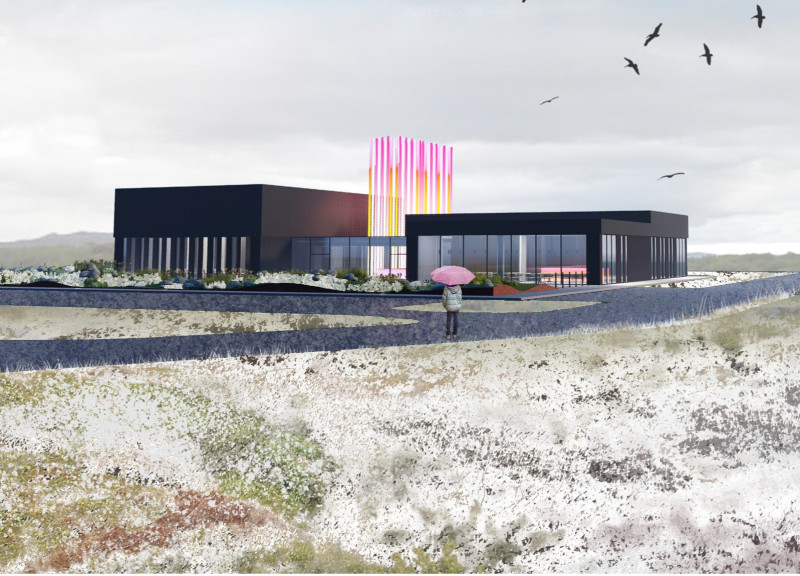5 key facts about this project
The design located near the Hverfjall volcano in Iceland integrates elements of the surrounding landscape with functional spaces. It serves various purposes, including an exhibition hall, information center, café, and offices. The concept is deeply connected to the geological features of the area, showcasing how volcanic processes can influence architectural design.
Conceptual Framework
The main axis of the building is oriented towards Hverfjall volcano, forging a strong connection between the structure and its environment. This orientation allows for views of the landscape while guiding the internal layout. The design reflects the shape and formation of a volcano, using massing and spatial arrangements that resonate with the natural elements of the site.
Site Organization
Parking has been organized into three separate sections to manage visitor traffic effectively without disrupting the landscape. Each parking area is enhanced with local landscaping, featuring hills, rocks, and small plants native to Iceland. This mindful placement helps the structure blend with its surroundings, demonstrating an awareness of the natural environment.
Materiality and Interior Design
The building's exterior features a combination of rough matte chiseled and polished stone panels. These materials tie the structure to its volcanic context, visually connecting the architecture to the landscape. Inside, the information center has aluminum cladding, while the café utilizes brass paneling. These choices provide a tactile experience and further ground the spaces in their surroundings.
Exhibition Hall Dynamics
Central to the design is the exhibition hall, marked by a ceiling that mimics natural columnar jointing. This element enhances the spatial experience for visitors. Additionally, a system of curtains allows for flexible use of the space, accommodating various events and activities. The exhibition hall's adaptable design reflects the project’s functional goals and supports community engagement.
The relationship between architecture and geology is evident in the detailed elevations and sections, which demonstrate how the building interacts with the site's topography. The design culminates in a structure that is a reflection of the volcanic landscape, highlighting the connection between natural processes and human-made environments.






















































